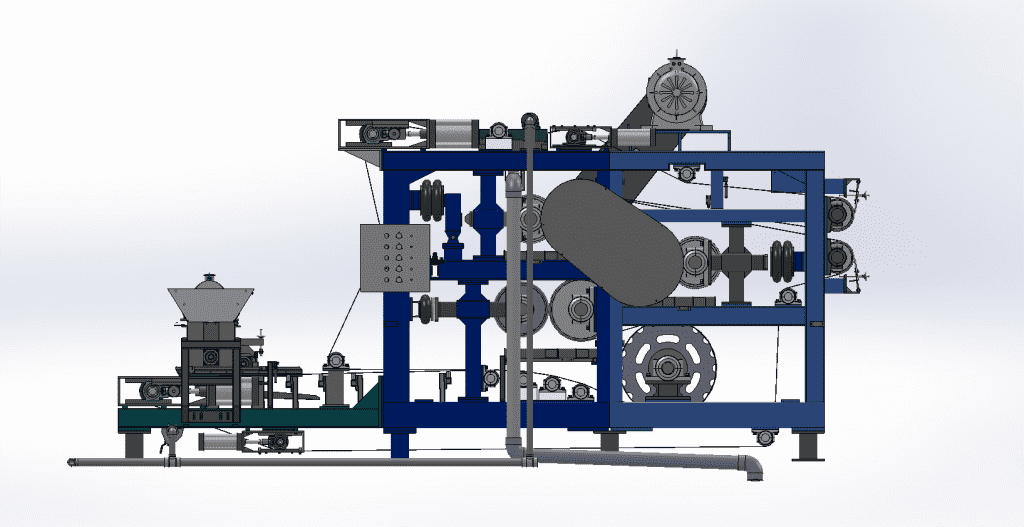

Tel:
+86-757-8633-0278
Email:doyen@doyenchina.com
Fax:+86-757-86287390
Address:Room 201, Building No. 24, Yicui Rose Garden, No. 2, Jihua 7 Road, Chancheng District, Foshan City, Guangdong Province, China 528000.
Brief introduction of cassava dregs dryer
Cassava residue is a kind of material which combines water and oil, so the water content is not easy to deal with. Moreover, the cassava dregs will form a mass when the concentration increases, which is very unfavorable to the evaporation of water. In view of this feature, our company has developed a complete set of equipment for drying cassava dregs.
Cassava dregs enter into the dryer, and under the action of special pusher plate and dry hot air, they move back and forth in the direction opposite to the direction of fresh dry hot air. In this process, the agglomerated cassava dregs are broken by the rapidly rotating crushing axis, and the water molecules are fully evaporated by high hot air flow. In the whole drying process, the thermal energy is fully utilized, and the cassava residue is evenly heated, so the color of the dried cassava residue is good, there is no paste, and the energy consumption is low.
Mechanical structure and working principle of cassava residue dryer
The cassava dregs dryer is mainly composed of heat supply, feeder, rotary drum, discharging machine, induced draft fan, unloader and power distribution cabinet; after entering the dryer, the cassava dregs are evenly distributed in the dryer and fully contact with hot air under the flip of the evenly distributed board in the drum, which accelerates the heat and mass transfer of drying. In the drying process, cassava dregs are discharged to another section of star discharge valve of the dryer to dry the finished products under the action of the inclined board and hot medium. The selection and design of process parameters, equipment technical parameters and structure of the production line are obtained after careful analysis and research of soybean dregs, and verified by the actual drying test of soybean dregs. In the scheme design, the characteristics of large moisture content, high protein content and high viscosity of soybean dregs are fully considered, and a series of unique unique technologies and processes are adopted to solve the problem, so as to ensure a good drying effect.
Main features of cassava dregs dryer

Mechanical structure and working principle of cassava residue dehydrator
Structure diagram of cassava residue dehydrator

Doyen specializes in providing belt press equipment for the Southeast Asian market. Welcome to visit our workshop, according to the actual situation of your company, develop a more scientific dehydration program.Welcome to joyce@doyenchina.com or visit https://www.doyenchina.com.
May-12-2020
admin

 +86-757-8633-0278
+86-757-8633-0278 doyen@doyenchina.com
doyen@doyenchina.com Sitemap
Sitemap